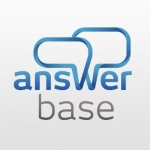What is most valuable?
I like the granularity that Datacap offers. I've worked with other capture solutions before, including FileNet Capture, Kofax and Captiva, to some extent. I haven't seen such a granular capture product. Because of that, we can achieve any level of customization. We can meet all business requirements, and that's great.
The second advantage of Datacap is the flexibility that it offers. There are a lot of actions. If I want to, I choose something like, for example, in OCR, there are multiple libraries I can use. I can even import third-party libraries. I can build my own libraries, and include it in. That's great. I like that part of Datacap.
How has it helped my organization?
We just started. We went live four months ago. We are really not using any advanced features of Datacap. Nonetheless, in terms of benefits, we definitely see better monitoring and better recording of statistics. Now, we can better manage our processes. Initially, with older captures, the reporting was a pain, but now we have very good reporting; that's one advantage. The second advantage is in terms of performance. We have some very good performance; no complaints at all in terms of performance. We are doing OCR-ing and high-speed indexing. We have considerably large volumes and Datacap is handling it pretty well.
What needs improvement?
Something that I want to be improved is the customization abilities and the ability to turn on and turn off features, disable them. I know it's a product and it offers a lot of features. If we don't need them, there should be a way to disable them.
I had a discussion with the Datacap group at a recent conference and I gave a couple of suggestions. One thing that we would definitely want to see is including some enhancements in Datacap that would reduce our solution development, our solution delivery time. I have mentioned so many benefits of Datacap versus the other capture solutions, other capture products. However, when you talk about solution development time, Datacap's solution development time is sometimes a multiple of other solutions’ development time, even for simple capture processes, because nothing is out of the box. Nothing is ready to use. For everything, you have to build a solution and for a lot of things that are very common, you have to customize too. Even if we are not customizing anything, even if we are not building our own actions and so on, the general solution building also takes time. I talked to Tom Stewart too at a recent conference. He said there are plans to build some compiled rule sets, which would reduce the development time, but I think IBM should give a priority to that.
My rating reflects the positives and a few negatives. As far as the negatives, as I’ve mentioned, solution development time is number one. Another is developing solo solutions is very, very difficult. Datacap has Datacap Studio, TM Web, multiple configuration files and then the application configuration. There are multiple applications and you have to switch between applications. There isn’t a uniform, integrated studio, where you go and build your solutions. That's one of the reasons.
The learning curve with Datacap is very high. It is very difficult to find really good Datacap professionals in the market. It's such a complicated product with which to build solutions for developers.
What do I think about the stability of the solution?
It's very stable. It hasn't gone down even a single time since we went live in May. That's definitely great.
What do I think about the scalability of the solution?
The scalability of Datacap is amazing; we really like it. On the fly, we added servers. The application was in production, we were experiencing slowness and one night we said, let's add a couple of more servers. We just started them and started using them without interrupting the business; the next morning, business continued as usual.
How are customer service and technical support?
Tech support has made us neither happy nor sad. The challenge with tech support is that it seems like every time we report something, they come up with a bunch of questions such as, What Datacap version are you using? What kind of application are you using? Is it customized? And so on. They have all of that information. That’s one issue.
Another issue is that they downgrade our priority. We say it's a priority 2 and then they downgrade it. They ask, how is it affecting you? For us, we feel the heat. We know why it is a priority 2, but they downgrade.
Then, most of the time the first answer that we receive turns out to not be possible. In many cases, we have to give them references of other customer's PMRs. We tell them something like, No, you did this for XYZ. Why are you saying to us, No, you can't do this enhancement? Then they come back a couple of days later and say, OK, yeah that's possible; we'll do it for you too. This is a real issue.
Also, there are enhancements and they say, this is an enhancement and it will be released in some future release. I understand their challenges; they can't tell us when it will be released, but we are waiting and waiting and waiting.
They are simple enhancements in terms of products. For example, the product offers certain features which we don't want to use. Our business process doesn't warrant them. We want to disable those, but there is no out-of-the-box way of disabling those through configuration or another way. We asked IBM and then they said, okay we'll do that enhancement but we are just waiting for it. Until then, we will ask the users, we will train the users, do not touch that part of the screen. That's a challenge. Every now and then, we see some adventurous user clicking some buttons and entering that part of it and filling some batches.
Which solution did I use previously and why did I switch?
Basically, we were using other capture products. We had everything; FileNet Capture, Kofax and Captiva. However, we chose IBM Datacap as our enterprise capture standard. That's because IBM is heading in that direction and the industry is heading in that direction.
How was the initial setup?
Initial setup was very, very straight forward. That's also one of the advantages of Datacap; installation and setup is extremely easy.
Which other solutions did I evaluate?
We really didn't consider other vendors. It was pretty much, go with IBM. We had already finalized on IBM FileNet P8. Datacap was a natural choice. There was a little bit of consideration of Kofax, but that’s it. IBM Datacap was a natural choice. One reason for that was licencing cost as well. Kofax licensing cost is huge; it's very expensive.
As I’ve mentioned, solution development time with Kofax is very low compared to Datacap. However, the flexibility that Datacap offers, Kofax doesn't offer. Kofax rates a little bit better in terms of UI and so on; very user friendly; end-user friendly. Kofax is a stable solution too. It is scalable as well.
The Kofax solution needs customization. As long as the business requirements are straightforward, you can build solutions very fast with Kofax. However, if there are complicated requirements, then Kofax really becomes a challenge.
The decision-making process was 3-4 years ago. It didn't take long. Datacap was a natural choice for us. We had already finalized IBM FileNet P8 and didn’t have multiple options.
We did not consider building a solution in house. It doesn't make any sense.
When selecting a vendor to work with, my most important criteria are reliability and their ability to deliver product solutions on time. Those are the most important things.
What other advice do I have?
To a colleague looking at Datacap and other, similar solutions, I would explain these positives and negatives and then I would let them make the decision. However, from my personal experience, it's working out well with IBM Datacap. We have not had any failures; we have our own success stories.
We have plans to employ IBM cloud solutions, but that's still under discussion because we are a healthcare company. There are some legal challenges and compliance challenges going with cloud solutions, but that's under discussion. We are you considering it because that's the way everyone is going; saving costs is one thing. Basically, centralizing everything and saving costs are the major drivers.
As far as new analytics or content management services that we're now able to provide for my organization, we also have Watson and another team is working on that. They're using it big time for healthcare. We have a lot of patient-related information that initially we weren't able to make sense of it. Now with Watson, they just started building it. That project just started. We are very hopeful that we will be able to provide better care with the help of Watson.
Regarding existing services that we're now able to provide better than we were previously, as I’ve mentioned, we just started. Previously, we were on the FileNet Images Service platform. Everything was desktop based, thicker client applications. Now, we are with FileNet P8 and thin client; definitely rolling out applications and using them becomes a lot easier. Customers are happy with that.
Change is never easy, so initially we had some internal and external customer experience hurdles due to the implementation of Datacap. We have multiple projects. Our first project went live in May. That particular one, that line of business, was using a heavily customized FileNet capture solution. Moving on to Datacap, they wanted to have everything like to like, but the Datacap desktop UI is not that easy to customize. We didn't have all those features that the heavily customized FileNet capture solution offered and they didn't like it. However, over a period of time we built it and we made it even better than that. They've seen improvement in their service transactions per hour. That's good. Now they're liking it.
We have plans to include mobile, however that's just in the pipeline. That's a future roadmap. We have plans to include mobile. We are even considering going paperless with Docusign.
Datacap usability is good. However, there are definitely a lot of areas with room for improvement, in terms of Datacap desktop or the ICN UI for indexing. That's a data entry application. Data entry people don't want to use their mouse. They have to finish data entry within a certain amount of time and provide a high throughput. Still, for a few things, Datacap doesn't support out-of-the-box hot keys. You have to customize for that. For lookups, Datacap gives links. Now users have to click those links with the mouse and that increases their indexing time. They're typing with something and they're grabbing mouse and then they're clicking. Considering they're doing thousands of indexing, thousands of batches every day, that takes up a lot of time. We faced those challenges. That's why the users didn't like the solution. We did our own customization, added our own hot keys and changed everything.
Disclosure: My company does not have a business relationship with this vendor other than being a customer.











